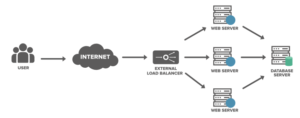
Introduction
In MySQL, triggers and stored procedures are database objects used to define custom logic and automate tasks within the database. They can help improve data integrity, enforce business rules, and reduce the amount of repetitive code in your applications. Let’s delve into the details of triggers and stored procedures.
Trigger
A trigger is a type of database object that is associated with a specific table and automatically executes a predefined action when a certain event (e.g., INSERT, UPDATE, DELETE) occurs on that table. Triggers can be used to maintain referential integrity, audit changes, or enforce business rules.
There are mainly two types of triggers in MySQL:
- Before Trigger: These triggers fire before the specified event (INSERT, UPDATE, DELETE) occurs. They can be used to validate data or modify the values before they are actually written to the table.
- After Trigger: These triggers fire after the specified event occurs. They are typically used to perform actions that are related to the event that just took place.
Here’s a basic example of a trigger that logs changes to a history table whenever a row is updated in the main table:
CREATE TRIGGER log_update
AFTER UPDATE ON main_table
FOR EACH ROW
BEGIN
INSERT INTO history_table (old_value, new_value, change_date)
VALUES (OLD.column_name, NEW.column_name, NOW());
END;
Stored Procedures
A stored procedure is a precompiled collection of SQL statements that can be executed as a single unit. They allow you to encapsulate complex logic and provide an interface for executing that logic with parameters. Stored procedures are often used to modularize code, improve security, and optimize performance by reducing the number of round-trips between the application and the database.
Here’s a simple example of a stored procedure that retrieves all employees of a given department:
DELIMITER //
CREATE PROCEDURE GetEmployeesByDepartment(IN department_id INT)
BEGIN
SELECT * FROM employees WHERE department = department_id;
END;
//
DELIMITER ;
Stored procedures can also have input and output parameters, which allow you to pass values into the procedure and receive results back.
Conclusion
To create and use triggers and stored procedures, you typically use a MySQL client or a GUI tool that allows you to interact with the database. Triggers and stored procedures can be powerful tools when used appropriately, but they should be designed carefully to avoid unintended consequences and performance issues.
In conclusion, triggers and stored procedures serve as indispensable tools in the MySQL database ecosystem, offering developers powerful means to automate tasks, enforce data integrity, and optimize database interactions. Triggers, by responding to specific events, enable real-time reactions to data changes, facilitating auditing, logging, and validation. Stored procedures, on the other hand, provide a structured and reusable approach to handling complex queries, enhancing code organization, security, and execution efficiency. Leveraging these features, developers can create more resilient and responsive applications while minimizing redundancy and ensuring consistent data management. As integral components of MySQL, triggers and stored procedures contribute to the overall robustness and reliability of database-driven solutions.



